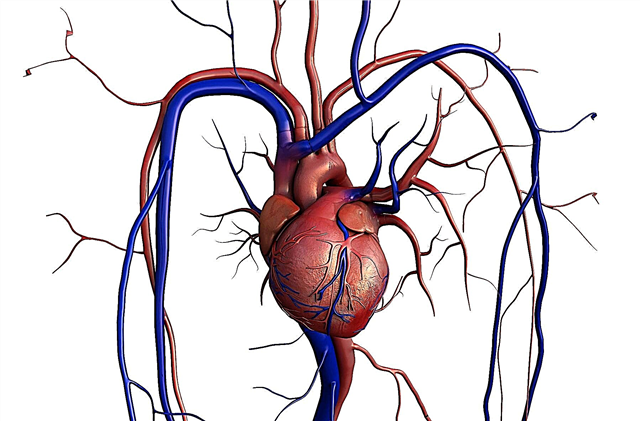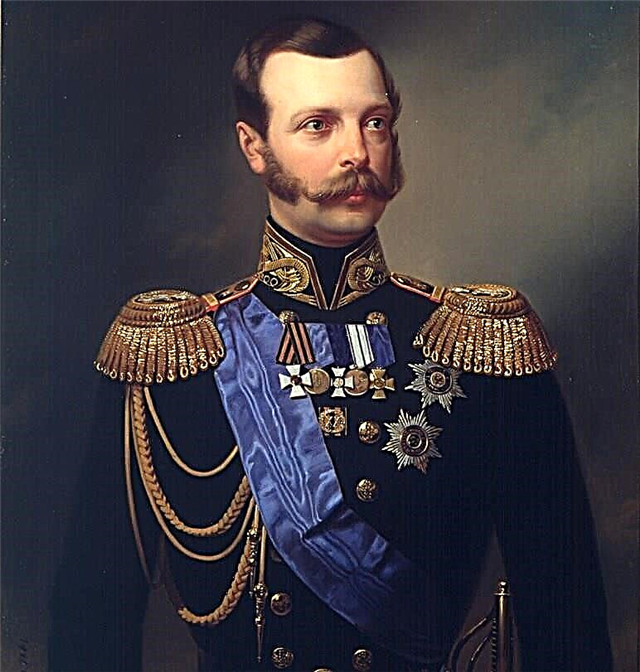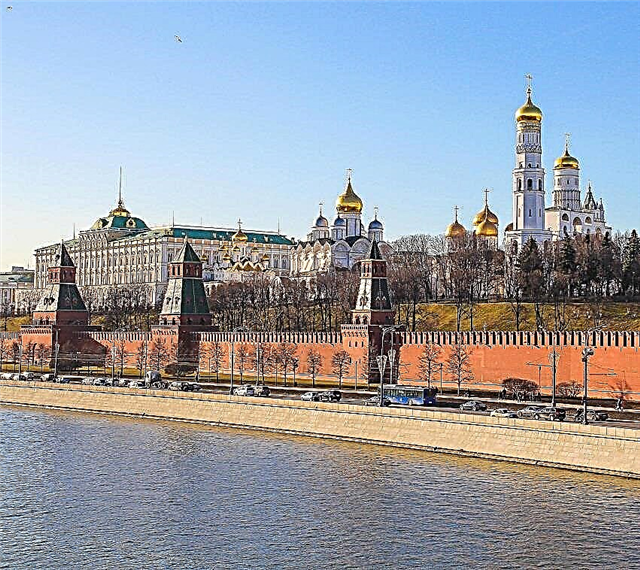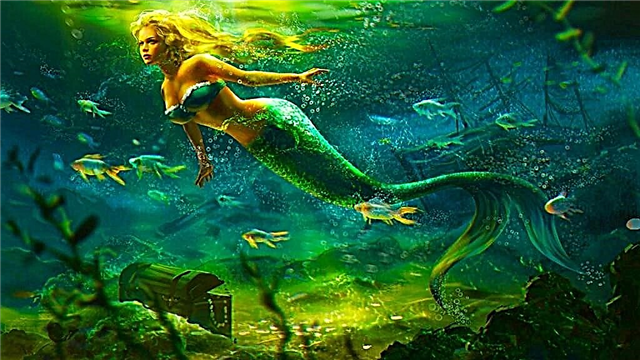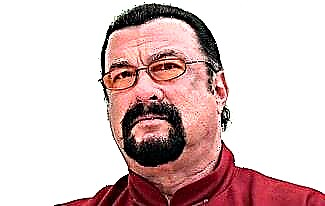On April 12, 1961, Yuri Gagarin made the first manned space flight and at the same time founded a new profession - "cosmonaut". At the end of 2019, 565 people have visited space. This number may differ depending on what is meant by the concept of "astronaut" (or "astronaut", in this case, the concepts are identical) in different countries, but the order of the numbers will remain the same.
The semantics of the words denoting people making space flights began to differ from the very first flights. Yuri Gagarin completed a full circle around the Earth. His flight was taken as a starting point, and in the USSR, and then in Russia, the cosmonaut is considered to be the one who made at least one orbit around our planet.
In the United States, the first flight was suborbital - John Glenn just flew in a high and long, but open arc. Therefore, in the United States, a person who has risen 80 kilometers in height can consider himself an astronaut. But this is, of course, pure formality. Now cosmonauts / astronauts are everywhere called people who have made a space flight lasting more than one orbit on a prepared spacecraft.

1. Of the 565 astronauts, 64 are women. 50 American women, 4 representatives of the USSR / Russia, 2 Canadian women, Japanese women and Chinese women and one representative each from Great Britain, France, Italy and Korea visited space. In total, including men, representatives of 38 countries have visited space.
2. The profession of an astronaut is extremely dangerous. Even if we do not take into account the human lives lost during preparation, and not during the flight, the mortality of astronauts looks monstrous - about 3.2% of representatives of this profession died at work. For comparison, in the most dangerous “earthly” profession of a fisherman, the corresponding indicator is 0.04%, that is, fishermen die about 80 times less often. Moreover, mortality is distributed extremely unevenly. Soviet cosmonauts (four of them) died due to technical problems in 1971-1973. The Americans, even having made flights to the moon, began to perish in the era of what was believed to be much safer reusable spacecraft "Space Shuttle". US space shuttles Challenger and Columbia claimed 14 lives just because the thermo-reflective tiles were peeling off their hulls.
3. The life of every cosmonaut or astronaut is short, although eventful. According to the calculations of not the most objective, but rather conscientious astronautics historian Stanislav Savin, the average life expectancy of Soviet cosmonauts is 51 years, NASA astronauts live on average 3 years less.
4. Truly draconian requirements were imposed on the health of the first cosmonauts. The slightest hint of possible troubles with the body with 100% probability ended in expulsion from the candidates for astronauts. 20 people included in the detachment were selected first from 3461 fighter pilots, then from 347. At the next stage, the selection was already out of 206 people, and even 105 of them dropped out for medical reasons (75 refused themselves). It is safe to say that the members of the first cosmonaut corps were the healthiest people at least in the Soviet Union for sure. Now astronauts, of course, also undergo an in-depth medical examination and are actively engaged in physical training, but the requirements for their health have become immeasurably simpler. For example, cosmonaut and famous popularizer of cosmonautics Sergei Ryazansky writes that in one of his crews all three cosmonauts were wearing glasses. Ryazansky himself subsequently switched to contact lenses. The centrifuge installed in Gorky Park gives about the same overloads as the centrifuges on which the cosmonauts train. But physical training to bloody sweat is still given priority.
5. With all the seriousness of ground and space medicine at the same time, punctures in people in white coats still happen. From 1977 to 1978, Georgy Grechko and Yuri Romanenko worked at the Salyut-6 space station for a record 96 days. Along the way, they set a number of records, which were widely reported: they first celebrated the New Year in space, received the first international crew at the station, etc. It was not reported about a possible, but not completed, first dental operation in space. On the ground, doctors examined Romanenko's caries. In space, the disease has reached the nerve with corresponding painful sensations. Romanenko quickly destroyed the painkiller supplies, Grechko tried to treat his tooth on commands from the Earth. He even tried an unprecedented Japanese device, which theoretically cured all diseases with electrical impulses sent to certain parts of the auricle. As a result, in addition to the tooth, Romanenko's ear also began to ache - the apparatus burned through him. The crew of Alexei Gubarev and the Czech Vladimir Remek, who arrived at the station, brought with them a small set of dental equipment. Seeing the gloomy shiny glands and hearing that Remek's knowledge of dentistry was limited to an hour's conversation with a doctor on Earth, Romanenko decided to endure it until landing. And he endured - his tooth was pulled out on the surface.
6. Vision with the right eye 0.2, left - 0.1. Chronic gastritis. Spondylosis (narrowing of the spinal canal) of the thoracic spine. This is not a medical history, this is information about the state of health of Cosmonaut No. 8 Konstantin Feoktistov. General Designer Sergei Korolev personally instructed the doctors to close their eyes to Feoktistov's poor health. Konstantin Petrovich himself developed a soft landing system for the Voskhod spacecraft and was going to test it himself during the first flight. The doctors even tried to sabotage Korolev's instructions, but Feoktistov quickly conquered everyone with his gentle and kind character. He made the flight together with Boris Egorov and Vladimir Komarov on October 12-13, 1964.
7. Astronautics is an expensive business. Now half of the Roscosmos budget is spent on manned flights - about 65 billion rubles a year. It is impossible to calculate exactly the cost of a single cosmonaut's flight, but on average, launching a person into orbit and staying there costs about 5.5-6 billion rubles. Part of the money is “fought off” by the delivery of foreigners to the ISS. In recent years, the Americans alone have paid about a billion dollars for the delivery of "space passengers" to the ISS. They also saved a lot - the cheapest flight of their Shuttles cost $ 500 million. Moreover, each next flight of the same shuttle cost more and more. Technology has a tendency to age, which means that the maintenance of the “Challengers” and “Atlantis” on the ground would fly into an ever larger dollar. This also applies to the glorious Soviet "Buran" - the complex was a breakthrough in science and technology, but for it there were no and still do not exist tasks adequate to the power of the system and the cost of the flight.
8. An interesting paradox: to enter the cosmonaut corps, you need to be under 35 years old, otherwise the person who wishes will be wrapped up at the stage of documents acceptance. But already acting cosmonauts fly almost until retirement. Russian cosmonaut Pavel Vinogradov celebrated his 60th birthday with a spacewalk - he was just on the ISS as part of the international crew. And the Italian Paolo Nespoli went into space at the age of 60 years and 3 months.
9. Traditions, rituals and even superstitions among astronauts have been accumulating for decades. For example, the tradition of visiting Red Square or taking pictures at the Lenin monument in Star City - Korolev goes back to the first flights. The political system has long since changed, but the tradition has remained. But the film “White Sun of the Desert” has been watched since the 1970s, and then it was not even released for wide release. Having looked at it, Vladimir Shatalov made a regular space flight. Georgy Dobrovolsky, Vladislav Volkov and Viktor Patsaev flew next. They did not watch the film and died. Before the next start, they offered to specially watch the “White Sun of the Desert”, and the flight went well. The tradition has been observed for almost half a century. Closer to the start, signs stand like a wall: an autograph on the door of a hotel in Baikonur, the song "Grass by the House", photographing, a stop where they stopped for Yuri Gagarin. Two relatively new traditions have been unconditionally accepted: the cosmonauts watch a parting film made by their wives, and the chief designer escorts the ship's commander to the stairs with a hefty kick. Orthodox priests are also attracted. The priest blesses the rocket without fail, but the astronauts may refuse. Oddly enough, there are no rituals or traditions in space before landing.

10. The most important mascot of flight is a soft toy, which the Americans initially took in their ships as an indicator of weightlessness. Then the tradition migrated to the Soviet and Russian cosmonautics. Astronauts are free to choose what they will take in flight (although the toy must be approved by safety engineers). Cats, gnomes, bears, transformers fly into space - and more than once. And the crew of Alexander Misurkin in the fall of 2017 took a model of the first artificial Earth satellite as a toy - its flight was 60 years old.
11. An astronaut is a very expensive specialist. The cost of training cosmonauts is very high. If the pioneers were preparing for a year and a half, then the preparation time began to stretch. There were cases when 5 - 6 years passed from the arrival of the cosmonaut to the first flight. Therefore, rarely any of the space travelers is limited to one flight - the training of such a one-time cosmonaut is unprofitable. Loners usually leave space due to health problems or irregularities. Almost an isolated case is the second cosmonaut German Titov. During the 24-hour flight, he felt so bad that he not only reported this to the commission after the flight, but also refused to continue to stay in the cosmonaut corps, becoming a test pilot.
12. Space nutrition in tubes is yesterday. The food that astronauts eat now is much more like earthly food. Although, of course, weightlessness imposes certain requirements on the consistency of dishes. Soups and juices still have to be drunk from sealed containers, and meat and fish dishes are made in jelly. Americans widely use freeze-dried products, their Russian colleagues really like their schnitzels. At the same time, the menu of each cosmonaut has individual characteristics. Before the flight, they are told about them on Earth, and cargo ships bring dishes corresponding to the order. The arrival of a cargo ship is always a celebration, as the “trucks” deliver fresh fruits and vegetables every time, as well as all kinds of culinary surprises.
13. Astronauts on the ISS took part in the Olympic torch relay before the Games in Sochi. The torch was delivered to orbit by the crew of Mikhail Tyurin. The astronauts posed with him inside the station and in outer space. Then the returning crew descended with him to Earth. It was from this torch that Irina Rodnina and Vladislav Tretyak lit the fire in the large bowl of the Fisht stadium.
14. Unfortunately, the times when the cosmonauts were surrounded by popular love and their work was evaluated according to the highest standard are over. Unless the title “Hero of Russia” is still being awarded to everyone who has made a space flight. For the rest, astronauts are practically equated with ordinary employees working for a salary (if a serviceman comes to the cosmonauts, he must resign). In 2006, the press published a letter from 23 cosmonauts asking them to provide them with housing that was long ago required by law. The letter was addressed to the President of Russia. V. Putin imposed a positive resolution on him and verbally demanded that the officials resolve the issue and not "bureaucratic" it. Even after such unambiguous actions of the president, officials gave apartments to only two cosmonauts, and another 5 recognized them in need of better housing conditions.
15. The story with the departure of cosmonauts from the Chkalovsky airfield near Moscow to Baikonur is also indicative. For many years the flight took place at 8:00 after a ceremonial breakfast. But then the border guards and customs officers working at the airport were pleased to appoint a change shift for this hour. Now the cosmonauts and accompanying persons leave either earlier or later - as the law enforcers want.
16. As in the sea some people are tormented by seasickness, so in space some astronauts sometimes have a hard time from space sickness. The causes and symptoms of these health disorders are similar. Disturbances in the functioning of the vestibular apparatus caused by rolling in the sea and weightlessness in space lead to nausea, weakness, impaired coordination, etc. Due to the fact that the average astronaut is physically much stronger than the average passenger of a sea vessel, space sickness usually proceeds more easily and passes faster ...
17. After a long space flight, astronauts return to Earth with a hearing impairment. The reason for this attenuation is the constant background noise at the station. There are dozens of devices and fans operating simultaneously, creating background noise with a power of about 60 - 70 dB. With a similar noise, people live on the first floors of houses near crowded tram stops. The person calmly adapts to this level of noise. Moreover, the cosmonaut's hearing records the slightest change in the tone of individual noises. The brain sends a signal of danger - something is not working as it should. The nightmare of any astronaut is the silence at the station. It means a power outage and, accordingly, a mortal danger. Fortunately, no one has ever heard the absolute silence inside the space station. The mission control center once sent an erroneous command to the Mir station to turn off most of the fans, but the sleeping astronauts woke up and sounded the alarm even before the fans completely stopped.
18. Hollywood somehow slipped into its plot research the fate of twin brothers, astronauts Scott and Mark Kelly. In very winding ways, the twins received the specialty of military pilots, and then came to the astronaut corps. Scott went into space for the first time in 1999. Mark went into orbit two years later. In 2011, the twins were supposed to meet on the ISS, where Scott had been on duty since November of the previous year, but the start of Endeavor under Mark's command was repeatedly postponed. Scott was forced to return to Earth without meeting Mark, but with an American record - 340 days in space in one flight, and 520 days of total space flight. He retired in 2016, 5 years later than his brother. Mark Kelly left his space career to help his wife. His wife, Congressman Gabrielle Giffords, was severely wounded in the head by the madman Jared Lee Lofner, who staged a 2011 Safeway supermarket shooting.
19. One of the most significant achievements of Soviet cosmonautics is the feat of Vladimir Dzhanibekov and Viktor Savinykh, who in 1985 revived the Salyut-7 orbital station. The 14-meter station was already practically lost, a dead spacecraft revolved around the Earth. For a week the cosmonauts, who worked in turns for safety reasons, restored the station's minimum operability, and within a month Salyut-7 was completely repaired. It is impossible to pick up or even come up with an earthly analogue of the work done by Dzhanibekov and Savinykh. The film "Salute-7", in principle, is not bad, but it is a work of fiction, in which the authors cannot do without drama to the detriment of technical issues.But on the whole, the film gives a correct idea of the nature of the mission of Dzhanibekov and Savinykh. Their work was of great importance from the point of view of flight safety. Before the Soyuz-T-13 flight, the cosmonauts were, in fact, kamikaze - if something happened, there was nowhere to wait for help. The Soyuz-T-13 crew proved, at least in theory, the possibility of carrying out a rescue operation in a relatively short time.
20. As you know, the Soviet Union attached great importance to strengthening international ties through the so-called. joint space flights. The crews of three people first included representatives of the "People's Democracies" - a Czech, a Pole, a Bulgarian, and a Vietnamese. Then the cosmonauts flew just from friendly countries like Syria and Afghanistan (!), Towards the end, the French and the Japanese were already riding. Certainly, foreign colleagues were not ballast for our cosmonauts, and they were trained in full. But it's one thing when your country has 30 years of flights behind it, it's another thing when you, a pilot, have to fly into space with the Russians, in their ship, and even in a subordinate position. Different collisions arose with all foreigners, but the most significant case occurred with the Frenchman Michel Tonini. Examining the spacesuit for spacewalk, he was surprised at the subtlety of the front glass. In addition, there were also scratches on it. Tonini didn’t believe that this glass could withstand loads in outer space. The Russians have a short conversation: "Well, take it and break it!" The Frenchman began in vain to beat on the glass with whatever came to hand. Seeing that the foreign colleague was in the right state, the owners accidentally slipped a sledgehammer to him (apparently, in the Cosmonaut Training Center they hold sledgehammers for greater severity), but with the condition that in case of failure, Tonini puts out the best French cognac. The glass survived, but our cognac didn't seem very good.


